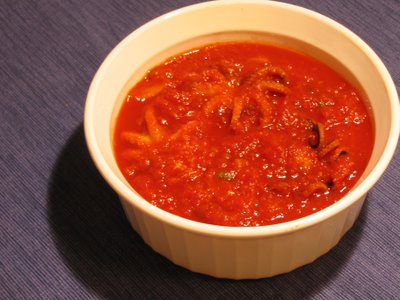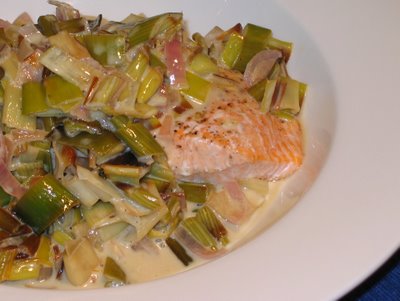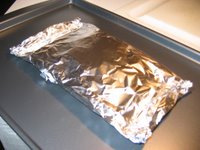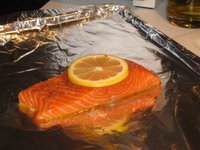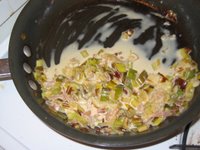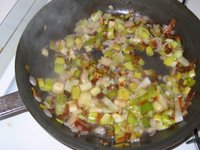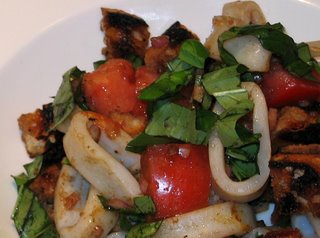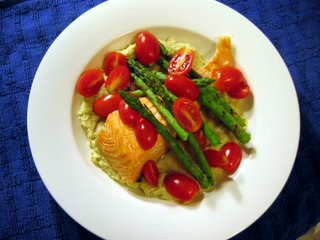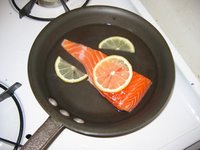Skate with Peas & Mint
 A couple weeks ago I watched the documentary, The Real Dirt on Farmer John. This movie tracks the history of farmer John’s family roots and the difficulties he faces in continuing the family business. As you can probably guess, keeping the family farm in business has been a challenge for him. The touching part of the film is seeing how much that affects him—not so much financially as much as emotionally. Farmer John is an endearing, unique character with a darling mother so of course I now picture every farmer being like him, which makes me want to rush out and support my local farmers’ market even more.
A couple weeks ago I watched the documentary, The Real Dirt on Farmer John. This movie tracks the history of farmer John’s family roots and the difficulties he faces in continuing the family business. As you can probably guess, keeping the family farm in business has been a challenge for him. The touching part of the film is seeing how much that affects him—not so much financially as much as emotionally. Farmer John is an endearing, unique character with a darling mother so of course I now picture every farmer being like him, which makes me want to rush out and support my local farmers’ market even more.My urge to increase my visits to the farmers’ market is also encouraged by the environmental aspects. I admit it—I have never been all that into going out of my way to “save the environment.” This is mostly because I feel a bit confused by all the conflicting information. For example, one day those who buy a Toyota Prius are being patted on the back for saving our Earth only to find out the next day that making the dang car is actually worse for the environment than other alternative autos. Sheesh.
 My friend, Libby, recently started a new blog called How Green Is…, which focuses on the environment in a realistic manner. Reading her blog has helped put the environment back in the forefront of my mind. I mean, I am still annoyed by all the conflicting information, but there are some things that are pretty straightforward. Such as, buying your food locally means that the food is being driven a shorter distance, which we can all agree is better for the environment. Phew.
My friend, Libby, recently started a new blog called How Green Is…, which focuses on the environment in a realistic manner. Reading her blog has helped put the environment back in the forefront of my mind. I mean, I am still annoyed by all the conflicting information, but there are some things that are pretty straightforward. Such as, buying your food locally means that the food is being driven a shorter distance, which we can all agree is better for the environment. Phew.So for these reasons (and some others, which I won’t get into now), I am now trying to run out to my farmers’ market even more.
The other day I was watching Jamie Oliver’s show, Jamie at Home. He brought us to his greenhouse where he put together a yummy looking dish with smashed raw peas and mint, which he served over grilled toast. This peaked my interest so I headed to the farmer’s market looking for ingredients to make something similar, and here is what I came up with (for 1 serving):
- ¾ - 1 cup shelled, raw sugar snap peas
- ¼ cup fresh mint, chopped
- 1 lemon
- 1 tsp plus 2 tbsp Olive oil
- Salt
- 1 Skate fillet (alternatively, you can also use turbot)
- Flour
- Carefully chop the fresh peas, and then put them into a bowl (or you may have better luck keeping them on the cutting board). Add the mint, zest from the whole lemon, and 1 tbsp olive oil. Smash together with a pestle/ back of wooden spoon/ or fork. Squeeze one half of the lemon into the mixture. Add salt to taste (don’t be shy with the salt). (If you have a mortal and pestle, this would be ideal. Using a food processor on “pulse” would also make this easier.)
- Rub the sake fillet with 1 tsp of olive oil. Dredge fish in flour and shake excess flour off. Add 1 tbsp olive oil to a non-stick pan over medium high heat. Add the fish and cook on both sides until cooked through. (My fillet took about 3-4 minutes on each side.)
- Serve fish on plate and squeeze other lemon half on top. Spoon pea mixture onto fish. Garnish with a drizzle of olive oil on the plate around the fish.







